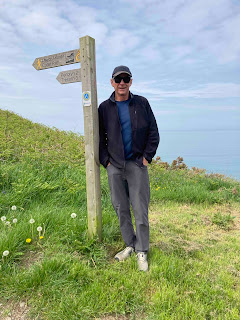How many times has Wales won the Rugby World Cup?
How many times has Wales won the Rugby World Cup? If you answered less than one, then you are correct. Despite this Wales boasts a rugged and fierce rugby heritage – almost as rugged and fierce as its coastline which, unlike its rugby team, is incredibly beautiful.
Impressively Wales is the only country in the world where you can walk the length of its entire coast on the dedicated 1400km Wales Coast Path. During our six day stay in Wales we have completed the entire track. No, not really. Actually, we have driven up and down a big chunk of it, explored a number of quirky, commanding and picturesque places and enjoyed a few short walks on various sections of the coastal path.
The main market town in the Ceredigion region is Aberystwyth. After days of trying to get the pronunciation sorted, we discovered that it is really not that hard; Aber-yst (ist)-wyth (with). It is a stunning seaside town, which a hundred years ago was the hip summer place to be seen as you journeyed by train to the seaside from the English industrial midlands. Today it is past its peak of popularity, but when the sun shines it reveals its former glory. A ride up the near vertical Cliff Railway is certainly longer and may even be steeper than Katoomba’s Scenic Railway and rewards with a spectacular panorama of the town, the coast and the green farmland as it meets the sea. The highlight at the top of the hill, apart from the view, is nine very short holes of ‘crazy golf ‘(putt putt) which may have won the masses in the past, but today is easily passed by. Students are now the hip crowd as the town boasts a thriving University featuring the impressive National Library of Wales.
Further south on the Ceredigion Coast is the enchanting town of Aberaeron. The colourful rows of brightly painted Regency styled houses with perfect windows framed in white suggest to the visitor that the locals must maintain planning laws to present such uniformity and consistency of design. A little reading of history confirms that the town was Wales’ first fully planned town, the brainchild of Rev Alban Jones-Gwynne. The good reverend’s vision was a town that looked like a picture postcard, with houses and commercial buildings gracefully lined around the harbour and containing a principal town square.
The final stop today is Mwnt Beach a popular ancient and modern site reached via the narrowest of hedgerow-lined, two-way, single-lane road. The ocean today is windless, and the sea is as smooth as glass. The locals are basking semi-clad as the temperature rockets to 17 degrees. The picturesque white painted, stone, 14th century church features an ordinary 20th century pedal organ (which a fellow visitor insists on playing) and a much more impressive 12th century baptismal font. It provided a welcome spiritual respite over the centuries for needy sea farers and also a stopover point for medieval pilgrims on route to the Cathedral at St David’s.
Australians proudly, and at times over defensively, boast about our beaches and coastline but trust us when we declare that the Welsh coastline is right up there! However, with the sea temperature approaching 10 degrees we are not tempted, like a few locals, to take a dip.







Thanks for the great description of the Welsh coastline. Made us want to visit 😃 Cheers Stuart
ReplyDelete